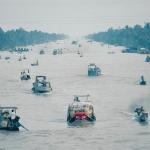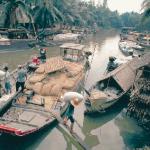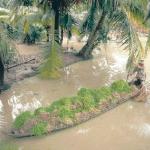A Portrait of Viet Nam
Lou Dematteis is a regular contributing photographer to Destination:Vietnam. Lou's latest book, A Portrait of Viet Nam, published by W.W. Norton contains many of the photographs our readers have had the opportunity to see over the past two years. We show you some here, in case you missed them.
After a long period of isolation, partially self-imposed and partially as a result of a punishing trade and diplomatic embargo imposed by the United States, Vietnam has in the last few years begun opening its doors to the world. Along with this opening, the nation has been experiencing an internal liberalization that is ushering in dramatic changes in the economic, social, cultural, and artistic spheres.
Throughout the Vietnam War and after, we have known and learned very little about the Vietnamese people. Accounts of the war and the country have focused almost exclusively on American involvement. This book provides us with new information. Focusing his camera on the daily lives of ordinary people, Lou Dematteis documents a vibrant, rapidly changing country of over 72 million inhabitants?a gracious people who were once considered America's most implacable foes and who now look forward to a future of friendship and cooperation.
Return to Sarah Tilton's article -- Haiphong
Return to Sarah Tilton's article -- Escape to Vung Tau article
 ThingsAsian
ThingsAsian


















